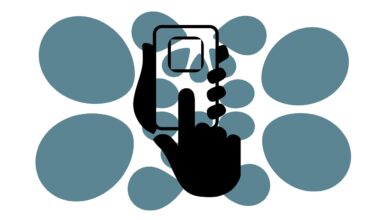Integrating Paid Ads with Organic Content Strategies in E-commerce Growth
E-commerce has transformed the way businesses connect with consumers, making the integration of paid ads with organic content strategies essential. Understanding how these two components can complement each other helps companies maximize their reach and drive growth effectively. Paid advertising often brings immediate visibility and can quickly capture target demographics, resulting in increased traffic and sales. In contrast, organic search optimizes long-term results through valuable content that builds trust and authority in a niche. By leveraging both strategies, e-commerce brands can achieve sustainable growth. This synergy allows brands to capitalize on paid campaign momentum while fostering an engaged audience organically over time. In practice, this means creating compelling ads that lead users to informative content, enhancing their experience and converting them into loyal customers. Optimally architecting this integration can lead to increased customer retention, lower acquisition costs, and ultimately, higher return on investment (ROI). In this article, we explore effective methods for uniting paid advertisements with organic content for achieving a comprehensive growth strategy. The balance between these tactics ensures e-commerce brands remain competitive in today’s digital landscape.
The first step in effectively integrating paid ads with organic strategies is understanding their respective strengths. While paid advertisements can provide immediate visibility across various platforms, organic content is instrumental for building credibility and long-term customer engagement. It is crucial to allocate budget proportionally between the two to ensure both short-term gains and long-term sustainability. E-commerce brands should conduct market research to identify which organic topics resonate with their target audience, as this information can guide paid ad campaigns toward those interests. Additionally, analyzing conversion patterns can help adjust messaging to improve marketing efforts. Consistent communication between teams handling paid and organic content encourages the alignment of messages across channels, enhancing brand voice and experience. Another essential aspect is harnessing data analytics to monitor the performance of ads correlated with organic traffic. Utilizing tools such as Google Analytics can provide insights into which paid efforts are driving organic interest and engagement. Furthermore, fostering a culture of experimentation allows brands to refine their approaches continually. This adaptability is vital as e-commerce landscapes inevitably evolve, requiring innovative thinking to stay ahead.
Content Synergy Between Paid and Organic
Creating content that serves both paid advertisements and organic channels is a strategic way to unify efforts across marketing formats. When crafting this content, consider the intent behind different search behaviors. By understanding user intent through targeted keywords, businesses can tailor their messages accordingly. Paid ads can highlight specific promotions, while organic content can explore topics related to those promotions extensively. A conversion-focused landing page should reflect the ad’s messaging, providing a seamless transition for users. This strategy not only improves user experience but also decreases bounce rates, fostering higher customer retention. Moreover, utilizing compelling visuals and persuasive copy across both types of content attracts greater engagement. Leveraging customer testimonials and social proof in both ads and organic content enhances consumer trust. Developing infographics or videos that can be promoted through paid campaigns while also being featured organically on blogs can effectively boost overall reach. By creating cohesive content that resonates through multiple channels, brands enhance their professional image and encourage stronger relationships. Organic SEO practices should not be overlooked; ensuring proper meta descriptions and keyword optimization is crucial to maximizing exposure for both paid and organic content.
Utilizing social media platforms is pivotal in the integration of paid ads with organic content. Organic posts often serve as an introduction to a brand’s voice and ethos, whereas paid ads can target specific demographics with tailored messages. Different platforms lend themselves well to various types of content, and brands should be selective in their approaches. For example, Instagram and Pinterest are ideal for visually rich content, whereas platforms like LinkedIn may work better for B2B marketing. Creating ad campaigns that link to organic articles or posts helps to boost engagement and encourage sharing, which organically extends reach. Moreover, using retargeting strategies can remind potential customers of products or content they previously engaged with. Retargeted ads can effectively prompt users to revisit organic content, allowing a valuable opportunity to convert interest into purchases. Furthermore, analyzing user interaction with both paid and organic content leads to better campaign refinement. Brands must remain agile and open to feedback and engagement metrics, ensuring campaigns evolve in tandem with consumer behavior. This responsive strategy is key to maintaining relevance in the fast-paced e-commerce environment, enabling businesses to outpace competitors.
Measuring Success of Integrated Strategies
To effectively integrate paid and organic strategies, measuring the success of both components is crucial. Key performance indicators (KPIs) should be established that encompass metrics from both strategies. For instance, using metrics such as Cost-Per-Acquisition (CPA) for paid campaigns and organic traffic growth can indicate overall campaign effectiveness. Establishing conversion tracking on landing pages can reveal how users interact with promotions from both sources. Comparing conversion rates from paid ads leading to organic inquiries provides insights into how well messages resonate. Regularly assessing the relationship between paid spend and organic growth helps to understand the effectiveness of campaigns. Sharp fluctuations in trends can signal adjustments needed in either approach. Additionally, using A/B testing allows brands to experiment with different ads and content formats to find the best-performing combinations. This testing can uncover specific audience preferences, allowing campaigns to be fine-tuned for higher impact. Also, aggregating data from various platforms helps capture a comprehensive view of performance, ensuring that brands can leverage insights to inform future strategies. Consistent reviews of data help shape informed decisions that enhance overall growth.
Combining paid ads with organic strategies can also enhance customer relationship management (CRM) within e-commerce. Paid campaigns can contribute to growing email lists through special offers and discounts, which can then drive organic content strategies directed toward these warm leads. Email marketing, combined with informative content, can nurture leads effectively. Creating personalized journeys that consider consumers’ previous interactions helps maintain relevance and fosters engagement. Additionally, email campaigns can promote organic blog posts or product highlights featured in paid ads, creating a reciprocal relationship that optimizes marketing efforts. Social proof remains a valuable asset; featuring customer feedback or success stories encourages trust and engagement from both paid and organic interactions. Moreover, integrating chatbots into e-commerce sites can help bridge the gap between the two strategies. This tool can aid in directing users to content based on their interactions, whether they come from ads or organic searches. The integration of chat interfaces allows brands to learn more about customer preferences and pain points. Gathering this information can inform both types of strategies, aligning future efforts with genuine customer needs and refining how content is presented.
Future Trends in E-commerce Growth Strategies
The future of e-commerce growth strategies lies in the continuous adaptation of paid and organic initiatives. Emerging technologies such as artificial intelligence play an unprecedented role in refining customer targeting and content optimization. Utilizing AI-driven analytics can illuminate user behavior trends, allowing brands to pivot their strategies accordingly. Additionally, the advent of voice search is reshaping how consumers discover content and products online. Crafting organic content optimized for voice queries alongside paid ad strategies becomes increasingly vital. Augmenting reality (AR) shows promise in offering a unique shopping experience, where blended paid and organic content can transform customer interactions. Personalized marketing will escalate, with an emphasis on tailored messaging that resonates with individual consumers. Social commerce is rapidly gaining traction, emphasizing the need for seamless integrations of paid ads within organic social media efforts. It is essential for e-commerce brands to stay ahead of these trends, continually refining their strategies to meet evolving customer expectations. The long-term success of any growth initiative relies on the brand’s ability to leverage both paid and organic channels while embracing the tools and technologies shaping the future of shopping.
Ultimately, the successful integration of paid ads and organic content strategies requires ongoing commitment and flexibility. Brands must remain willing to evaluate their existing tactics, adapting their approaches as new challenges and opportunities emerge. The evolving e-commerce landscape necessitates a mindset focused on innovation and experimentation. To ensure lasting, sustainable growth, understanding how paid and organic methods can coexist and amplify each other is crucial. Harnessing creative collaborations between team members responsible for both strategies fosters a unified approach that delivers results. In addition, prioritizing customer-centric initiatives when creating content ensures that brands meet their audience’s needs effectively. Strategies that prioritize user experience reap long-term rewards, encouraging consumer loyalty and repeat purchases. As the digital marketplace continues to expand, leveraging both paid and organic strategies provides a balanced approach to growth. Companies poised to embrace this dual strategy will likely find themselves better equipped to thrive in the share-driven economy. By continually refining and optimizing both approaches, brands can work toward achieving comprehensive success while meeting their overarching growth objectives.


